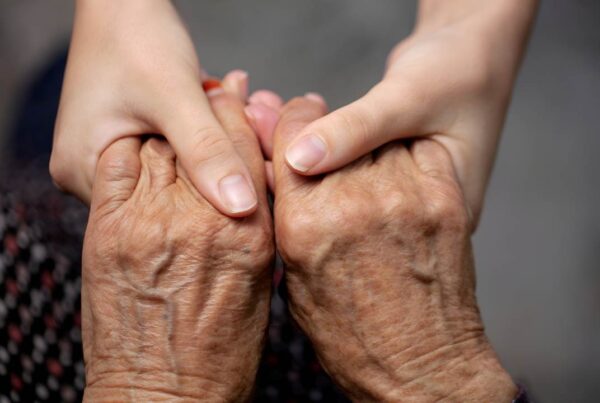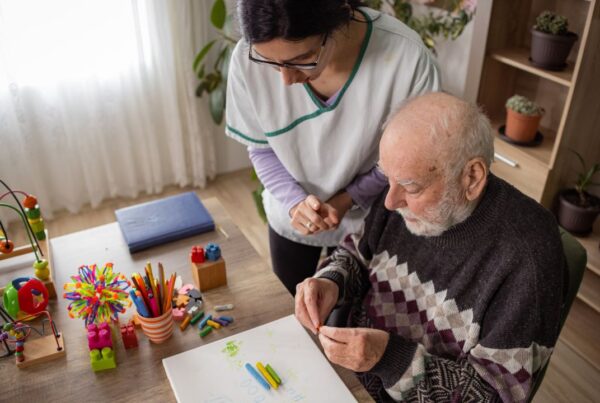Are you or a loved one facing a serious illness, feeling overwhelmed by not just the medical treatments but also the emotional and physical strain it brings? When someone is really sick, it can be super hard, not just because of the sickness but also because of all the tough feelings and changes it brings. That’s where something called palliative care comes in.
It’s a special kind of help for people who are very sick, to make them feel better and less stressed. Palliative care is all about making sure the person who is sick and their family are as comfortable and supported as they can be.
We’re going to talk about five key stages in palliative care. These steps start with figuring out what kind of help is needed, helping with any pain or uncomfortable feelings, being there for them emotionally, making tough decisions when someone is very close to the end of their life, and helping families feel supported even after their loved one has passed away.
Let’s find out how these steps in Palliative Care can help make things a little easier during a hard time. So, let’s get started.
What is Palliative Care?
Palliative care is a type of care for people who are very sick. It focuses on making them comfortable. This care helps with pain and makes sure they and their families feel supported. It’s not just for those at the end of their lives. Palliative care can start at any time after someone gets sick. It looks after the body, mind, and emotional needs. This means doctors, nurses, and other helpers work together to take care of the sick person. They also help the family with their worries and questions.

So, this care is really about making sure the sick person and their family have what they need to feel as good as possible. Now let’s get back to our main topic i.e. what are the five stages of palliative care?
What Are the 5 Stages of Palliative Care?
Exploring the 5 stages of palliative care offers a deeper understanding of how comprehensive care can significantly enhance the quality of life for those facing serious health conditions. From initial planning to bereavement support, each stage is designed to address the unique needs of patients and their families, ensuring comfort, dignity, and support throughout their journey.
So, let’s delve into these stages to discover how they contribute to comprehensive care and support.
Stage 1: Keenly observe the patient’s needs in palliative care
Palliative care starts with a comprehensive approach to understanding the patient’s health status and needs. This involves several key steps:
Detailed health evaluation
- Gathering Information: The first step involves collecting detailed information about the patient’s health condition. This includes a review of medical history, current symptoms, and understanding the impact of the illness on the patient’s daily life.
- Assessment: Medical professionals, including doctors and nurses, conduct thorough assessments to identify the patient’s physical symptoms, such as pain, difficulty breathing, or nausea, as well as emotional and psychological needs.
Creating a personalised care plan

- Setting Goals: After assessing the patient’s needs, the care team, together with the patient and their family, set realistic goals for care. These goals are focused on improving the patient’s quality of life and may include managing pain, improving mobility, or addressing emotional distress.
- Developing the Plan: The care team develops a personalised care plan tailored to the patient’s specific needs. This plan outlines the treatments and interventions that will be used to manage symptoms and support the patient’s well-being.
Focusing on comfort
- Pain Management: A key component of the care plan is managing pain effectively. This may involve medication, physical therapy, or alternative therapies to ensure the patient remains as comfortable as possible.
- Addressing Other Symptoms: Besides pain, the plan also focuses on managing other troublesome symptoms, such as fatigue, loss of appetite, or difficulty sleeping, using appropriate interventions.
Continuous monitoring and adjustment
- Review and Adaptation: The care plan is not fixed; it’s regularly reviewed and adjusted based on the patient’s changing needs and preferences. This flexible approach ensures the patient continues to receive the most appropriate and effective care.
- Ongoing Communication: Regular communication with the patient and their family is essential to understanding their experiences and any new challenges that arise. This allows the care team to make timely adjustments to the care plan.
Stage 2: Keeping symptoms in check
After figuring out the best plan of care, the next step is to make sure any discomfort or pain is kept under control. This is really important because it helps the person feel better and stay as active as they can.
Keeping symptoms in check

First, the care team keeps a close eye on any signs of discomfort or pain. It’s key to know what the person is feeling.
Using medicines wisely
Medicines can really help. The team makes sure they use the right ones to reduce pain and other tough symptoms. Getting the medicine mix right is crucial.
Other ways to help
Besides medicine, there are other ways to make someone feel better, like simple exercises, breathing techniques, or even relaxing music.
Checking in regularly
The care team doesn’t just set up a plan and forget about it. They check in often to see if anything needs to change. Regular updates make sure the plan works well.
Listening to the patient
The most important part is always listening to what the sick person says about how they feel. Their feedback guides the care they get.
Stage 3: Offering emotional and social help
After making sure the physical symptoms are under control, it’s just as important to take care of the person’s feelings and social needs. This stage is all about providing emotional and social support to help them and their families cope with the challenges of a serious illness.
Listening and understanding

The care team spends time listening to the person, trying to understand what they’re going through. Feeling heard is a big comfort.
Emotional support
Sometimes, just having someone to talk to about fears or worries can make a big difference. The care team is there to offer support, whether it’s a shoulder to lean on or advice on how to handle tough emotions.
Connecting with others
Being sick can sometimes make people feel alone. The care team can help connect them with support groups where they can meet others facing similar situations. Sharing experiences can lighten the load.
Helping families too
The family’s feelings are important as well. The care team helps them understand what their loved one is going through and how they can best support them. Family support strengthens the care circle.
Making social connections
The care team also helps the person stay as connected as possible with friends and loved ones, which is crucial for their emotional well-being.
Stage 4: Open Conversation about the Person’s Wishes for Their Care
This stage involves open conversations about the person’s wishes for their care. Knowing their needs, and desires is a key to their comfort:
Where do they want their care service?

Whether they want to be in a hospital, a care home, or at their own home. It also covers the kind of medical care they want to receive.
Preparing documents
This includes setting up documents that state what the person’s healthcare and personal wishes are. It’s also about deciding who will make decisions if they can’t.
Stage 5: Bereavement Care Services for Families
This stage focuses on the time after the patient has passed away. It’s a period of grief and adjustment for the family and friends left behind.
Offering support
Right after the loss, the care team is there to offer support and help. Being there for the family is essential.
Providing resources
The team can guide families to resources like counselling or support groups. This helps them deal with their feelings and find comfort.
Handling practical matters
Sometimes, families need help with things like planning a funeral or understanding what to do next. The care team can give advice or connect them to people who can help.
Continued care
The care doesn’t stop with the loss of the patient. The team checks in on the family, making sure they have what they need to cope. Continuing to care shows the family they are not alone.
Encouraging memories
Encouraging families to share stories and memories of their loved ones can help in the healing process. Memories keep the spirit of the loved one alive.

So, after getting through five stages of Palliative Care treatment, let’s have a look at the effects of these stages.
What Are the Impacts After the Five Stages of Palliative Care?
The impact through the five stages of palliative care can vary based on individual circumstances, including the nature of their illness, the extent of their symptoms, their personal and family needs, and how the care is implemented. Here’s a general overview of the potential impacts across the stages:
1. Awareness and early identification
Positive Impact: Early identification allows for timely intervention, which can significantly ease symptoms, reduce suffering, and help patients and their families understand the illness better. It also opens the door for advanced care planning.
Challenges: Patients may struggle with the acceptance of their condition and the need for palliative care, which can be emotionally challenging.
2. Assessment and care planning
Positive Impact: Comprehensive assessment ensures that the care plan is tailored to the individual’s needs, preferences, and values, which can greatly enhance their quality of life. It also facilitates communication among care providers and between providers and the family.
Challenges: The detailed assessment process may be time-consuming and emotionally taxing for patients and families.
3. Care delivery
Positive Impact: Effective care delivery can significantly relieve symptoms, improve mood, and enhance the ability to engage in daily activities and spend quality time with loved ones. It supports not only the patient but also family members.

Challenges: Continuously adjusting care plans to meet evolving needs can be complex and may involve difficult decisions about treatment options and goals.
4. Monitoring and evaluation
Positive Impact: Regular monitoring ensures that the care remains responsive to the patient’s changing needs, leading to timely adjustments in the care plan. This can lead to sustained symptom control and comfort.
Challenges: Frequent assessments and possible changes in care strategies might be overwhelming for some patients and families.
5. Transition or closure of palliative care services
Positive Impact: When palliative care is no longer needed because of either significant improvement or the patient’s passing, the transition can be handled with sensitivity and support, ensuring that the patient and family feel cared for and supported through to the end.
Challenges: The end of palliative care services can be a difficult transition for patients who have improved and may fear the return of symptoms or for families who have lost a loved one.
Conclusion
We’ve explored the 5 Stages of Palliative Care, guiding you through each phase from initial planning to supporting families after a loss. We emphasised the importance of managing symptoms, offering emotional and social support, making end-of-life plans, and providing bereavement care. These stages highlight the comprehensive approach palliative care takes to improve the quality of life for patients and their families during challenging times.
If you’re looking for expert guidance through the complexities of palliative care, Holly Care is here to help. Our team of compassionate professionals is dedicated to providing the support and care needed at every stage. Reach out to Holly Care for personalised assistance and let us be your partner in navigating the journey of palliative care.
FAQs
1. What is included in the initial stage of palliative care?
In the first stage, a personalised care plan is created with input from you, your family, and your palliative care team. This plan focuses on your specific condition and symptoms and includes discussions about future planning, like advanced decisions or creating a living will.
2. How does palliative care provide emotional support?
Emotional and spiritual support is a crucial part of the second stage, tailored to meet your and your family’s needs. This might involve counselling, support groups, or spiritual guidance to help manage the emotional impact of illness.
3. What happens during the symptom management stage of palliative care?
As the illness progresses, care focuses on making you comfortable. This involves adjusting treatments to control symptoms like pain, breathlessness, and fatigue, and considering whether home care or a move to a hospice or nursing home is needed.
4. Can palliative care help with legal and financial planning?
Yes, palliative care teams often include financial advisors and can connect you with legal resources. They can assist with creating important documents like living wills and help understand resources available to cover care expenses.
5. When should someone start palliative care?
Palliative care can begin at any time after a serious illness diagnosis. It’s often recommended to start early to manage symptoms effectively and plan for the future, but it can be beneficial at any stage of illness.
6. Where can palliative care be received?
Palliative care can be provided in various settings, including at home, in hospitals, nursing homes, assisted living facilities, or outpatient clinics, depending on your needs and available resources.






